Rainwater Harvesting
Harvesting the Power of Nature
Rainwater harvesting is the process of collecting, storing, and using rainwater that falls on rooftops, land surfaces, and other catchment areas. This ancient practice has been used for centuries in arid and semi-arid regions as a means of accessing clean water for household and agricultural needs. With the increasing concerns over water scarcity and environmental sustainability, rainwater harvesting has become an increasingly popular method for individuals, communities, and governments to conserve water resources and reduce the demand on municipal water supplies.
Rainwater is the best water source for plants because it is soft and free of salts, minerals, and treatment chemicals found in other water sources. Rainwater is also slightly acidic, which is ideal for most organically grown plants, and contains nitrates, an important macro-nutrient for plant growth.
Rainwater harvesting systems can range from simple and low-cost solutions such as rain barrels or cisterns, to more complex and sophisticated systems that involve the use of pumps, filters, and treatment processes to provide high-quality water for various uses. These systems can be used for a variety of purposes, including irrigation, landscaping, toilet flushing, and even as a source of drinking water with proper treatment.
In addition to providing a sustainable source of water, rainwater harvesting has many environmental benefits. By capturing rainwater, less stormwater runoff enters local waterways, which can reduce erosion, pollution, and flooding. It also reduces the demand for water from other sources such as groundwater and surface water, which can help conserve these valuable resources.
There is a significant connection between energy and water. In the state of California, for example, treating, and transporting water accounts for more than 20% of the state’s electricity and more than 5% of California’s greenhouse gas emissions. However, individuals can help reduce energy usage by lessening their reliance on pumped and treated water sources through rainwater harvesting.
Overall, rainwater harvesting is a simple, cost-effective, and environmentally friendly solution to conserve water resources and improve water security.
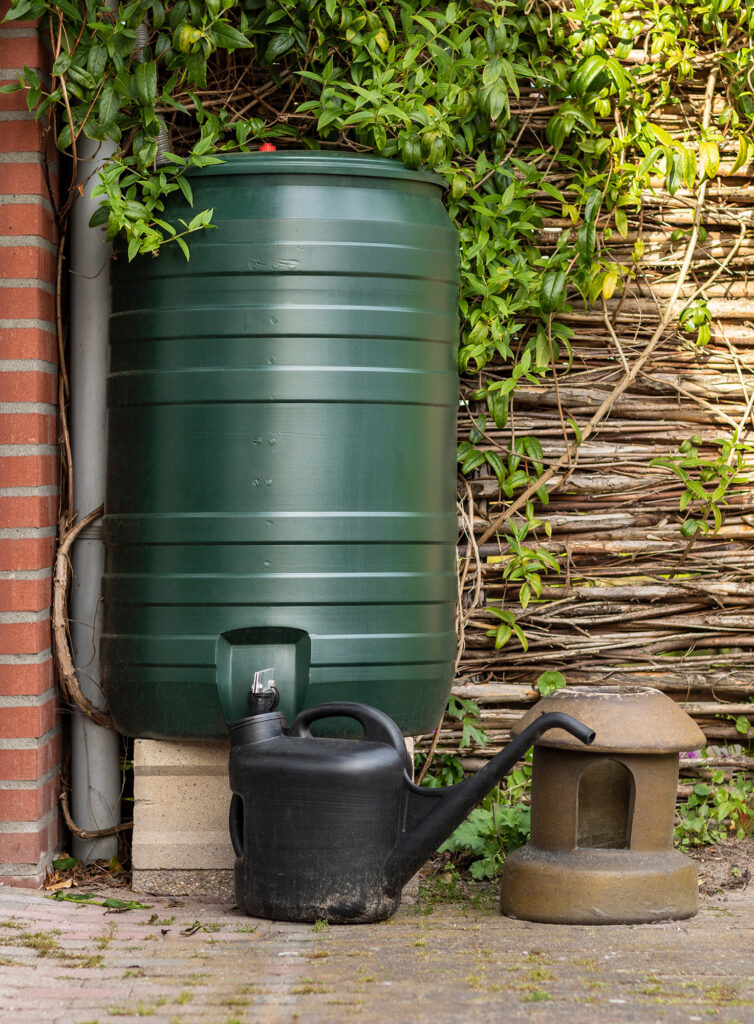
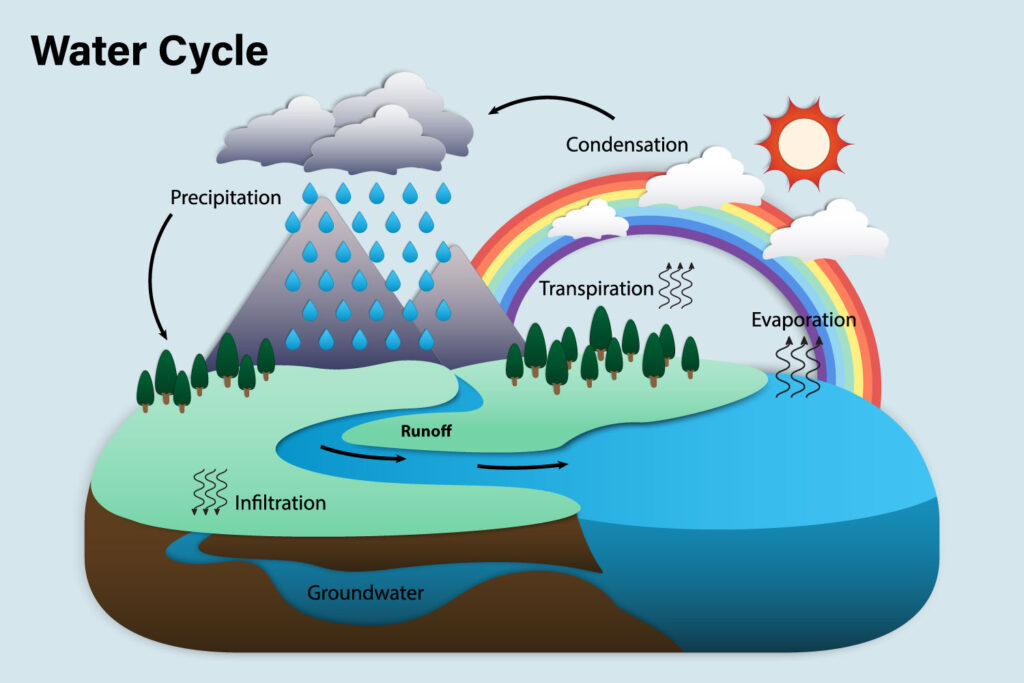
Water Cycle (Hydrologic Cycle)
Rain is an essential component of the water cycle or hydrologic cycle. It is a continuous process that involves the evaporation of water from the surface of the earth, the formation of clouds in the atmosphere, and the eventual return of water to the earth’s surface as precipitation, such as rain or snow
Urbanization and climate change can both have significant impacts on the hydrologic cycle, leading to changes in precipitation patterns and altering water availability, quality, and distribution. Urbanization often involves the construction of impervious surfaces, which prevent rainwater from seeping into the ground and recharging aquifers. This can lead to increased runoff and higher flood risks, as well as decreased water quality due to pollutants carried along with the runoff.
Climate change can cause changes in temperature, precipitation patterns, and weather extremes that can alter the balance of water in the Earth’s systems. Warmer temperatures can increase evaporation rates and reduce soil moisture, leading to more frequent droughts in some regions. Changes in precipitation patterns can lead to more intense rainfall events and greater flood risks in other regions.
It is essential to consider these factors when developing strategies for sustainable water management and adaptation to changing climate conditions.
Rainfall in Los Angeles
The average annual rainfall in Los Angeles is about 14 inches (355.6 mm).
However, rainfall amounts can vary widely from year to year and even from month to month, with most precipitation occurring during the winter months between November and March. It is important to note that Los Angeles has a Mediterranean climate, which is characterized by mild, wet winters and hot, dry summers.
This means that water conservation measures, such as rainwater harvesting, can play an important role in reducing water use and ensuring a reliable supply of water during the dry summer months.

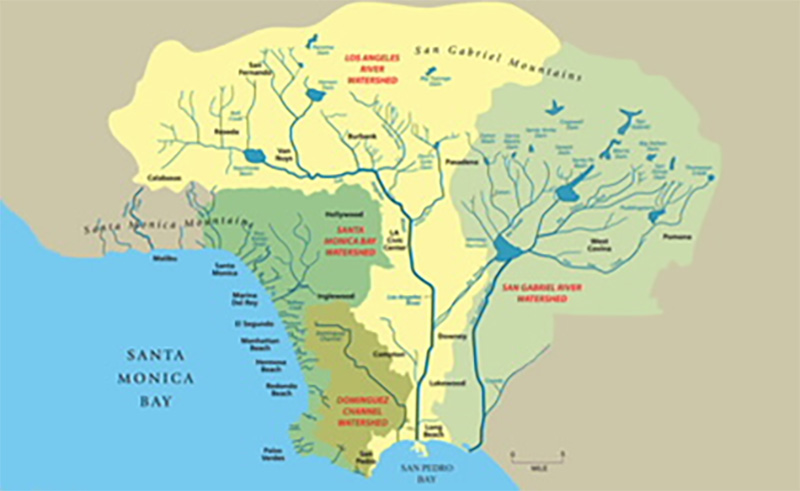
Los Angeles River
The Los Angeles River has a long and rich history, dating back over ten million years. Originally, the river was a major source of water and provided a livelihood for the Gabrielino Indians, who settled along its banks over 1000 years ago. However, with the advent of agriculture and development, the river was channelized to serve as a means of flood control. In 1914, a devastating flood caused $10 million in damages, leading to the formation of the Los Angeles County Flood Control District, and the beginning of a concerted effort to channelize the river. The project was completed in 1960, forming a fifty-one-mile engineered waterway. Today, the river is almost entirely lined along its length, with only three unpaved portions remaining.
While the city of Los Angeles has a history of channelizing and diverting its rivers and streams, there is now a growing recognition of the importance of capturing and reusing stormwater to reduce pollution, increase water supply, and support ecosystem health.
The city of Los Angeles has implemented various programs and initiatives to capture and reuse stormwater, such as the Low Impact Development (LID) Ordinance, which requires new development and redevelopment projects to incorporate green infrastructure to capture and treat stormwater on-site.
The LID ordinance encourages the use of practices such as rain gardens, permeable pavement, and bioswales to infiltrate, filter, and reuse stormwater, rather than allowing it to flow into the ocean. Additionally, the Los Angeles Department of Water and Power offers a Stormwater Capture Program, which provides financial incentives for property owners to install stormwater capture systems on their property to reduce runoff and improve water quality.
Saving Money with Rainwater
The amount of money a family in Los Angeles could save by using rainwater collected from their roof for outdoor water usage would depend on several factors, such as the size of the roof, the amount of rainfall in the area, and the family’s typical outdoor water usage.
However, we can make some general estimates. According to the Los Angeles Department of Water and Power, outdoor water usage accounts for approximately 50% of a household’s total water usage. So, if a family could use rainwater collected from their roof for all their outdoor water usage, they could potentially cut their total water usage in half.
Assuming an average water bill of $75 per month for a family of four in Los Angeles, cutting their water usage in half could save them around $37.50 per month or $450 per year.
We many municipalities offering rebate to absorb the cost of rain barrels and cisterns, it makes collection rainwater a big financial benefit.

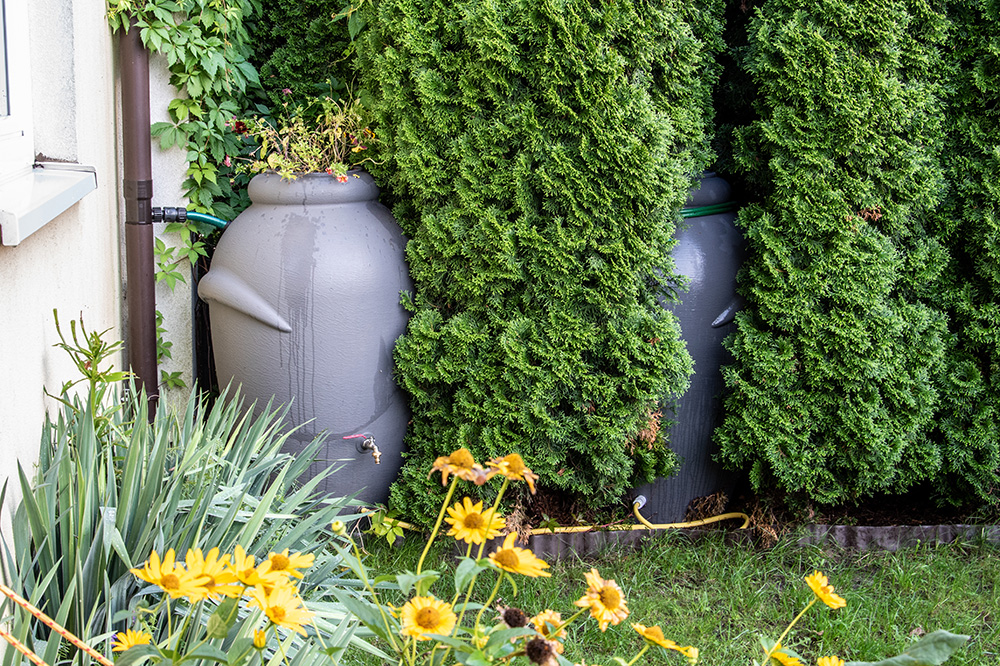
Are rain barrels illegal?
The answer is a straightforward NO.
In fact, many jurisdictions promote the use of rain barrels and cisterns to encourage rainwater harvesting for the benefit of the local water supply and the environment. The idea that collecting rainwater from your roof is illegal may have originated from a few possible reasons.
Firstly, it is a catchy and fun rumor to spread, especially during a time when people enjoy grumbling about the government. Secondly, in some states like Colorado, there was an interpretation of the prior appropriations doctrine that deemed water falling in the state as owned by downstream users.
However, in 2016, Colorado passed legislation to legalize rainwater harvesting on a limited basis. Lastly, in places where there are no codes or regulations on rainwater harvesting, untrained code inspectors may assume it is illegal when it isn’t.
The good news is that more states are adopting codes with simple standards for non-permitted rainwater catchment systems, making the process easier for homeowners and ensuring safe installations.
Rain Barrel Basics
Setting up a rain barrel at home is a great way to conserve water and save money on your water bill. Here are the steps to get started:
- Choose the right location: Look for a location near a downspout or gutter where rainwater can easily flow into the barrel. The location should also be level and stable enough to support the weight of a full barrel.
- Choose the right barrel: You can purchase a rain barrel from a hardware or garden store or look for barrel giveaways at our local farmer’s market. Make sure the barrel is made of food-grade plastic and has a lid or fine mesh to keep out debris and mosquitoes. A typical rain barrel holds around 55 gallons of water, or you can install a larger cistern.
- Install a diverter: A diverter is a device that connects the downspout to the rain barrel and helps to redirect water flow.
- Install a faucet and elevate the barrel: To make is easy to use the collected rainwater, make sure the barrel is elevated at least six inches from the ground and has a faucet to fill a bucket or to connect a water hose.
- Connect the overflow hose: If the rain barrel fills up, excess water needs to be directed away from the foundation of your home. Connect an overflow hose to the barrel and direct it away from your home’s foundation.
- Maintain your rain barrel: Regularly inspect your rain barrel for leaks or damage. Clean the barrel once a year to remove any debris or sediment that may have accumulated.
To determine the appropriate size of a rain barrel system or number of barrels, it’s important to consider the available space and dimensions of each barrel. While it’s tempting to calculate the amount of water you can collect from your roof, most roofs produce an excessive amount of runoff. Instead, focusing on system dimensions can be more helpful when sizing a rain barrel system.
A typical 55-gallon barrel requires a 2′ x 2′ footprint, usually positioned along a wall or fence. If your space allows for it, you can interconnect barrels in double or triple rows. Each barrel is about 35″ tall, and with a recommended cinder block foundation, the total height of the system is 3′ 7″. A foundation consists of two 8″ x 8″ x 16″ cinder blocks per barrel, with each set of blocks placed 2′ apart.
When installing multiple barrels, consider the location of windows, crawl spaces, electrical boxes, and other access points to avoid blocking them. You can customize your installation by adding extra space between barrels as needed. For a flat and stable surface, the cinder block foundation can be placed directly on concrete, asphalt, or a well-built deck. If your area is bare soil, it’s recommended to add a few inches of compactable base rock for a level and stable footing.
Ultimately, the available space will determine the size of your rain barrel system.
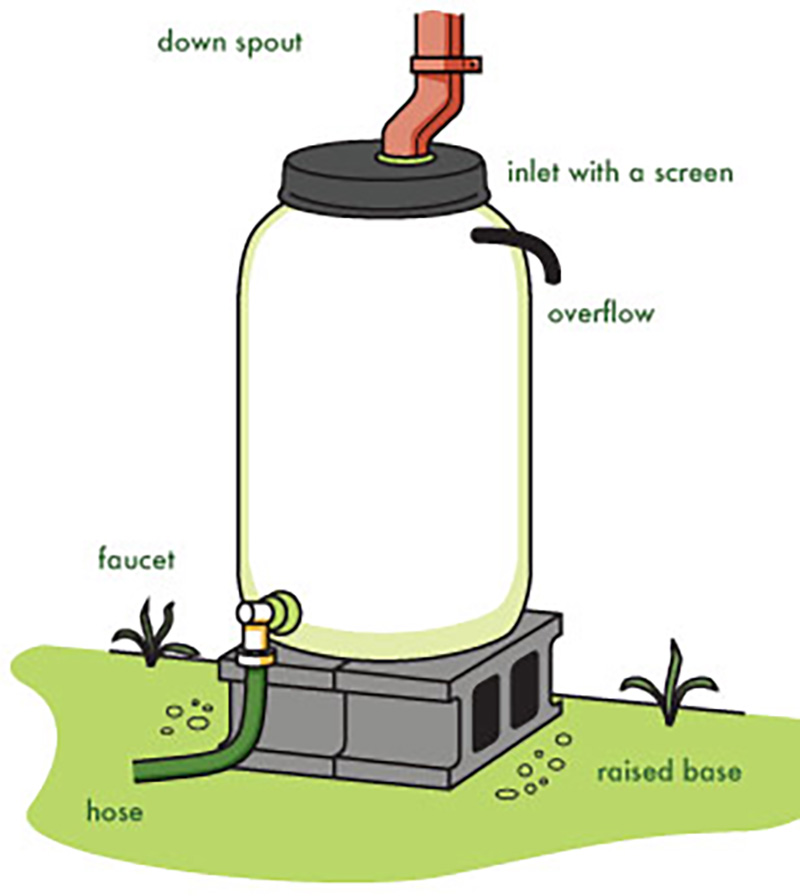

Roofs for Rainwater Harvesting
One of the key components of rainwater harvesting is the collection of rainwater from rooftops. Hence, it is important to choose the right roofing material to ensure the water collected is safe for use. In general, most roofing materials are suitable for rainwater harvesting, but there are a few materials to avoid.
Standing seam metal roofs are a popular choice for rainwater harvesting as they have the highest collection efficiency. Enamel coated or powder-coated standing seam metal roofs are appropriate for potable use with non-toxic finishes and appropriate components, tanks, and post-tank treatment. Even though it is not the most affordable material, it is still a good option to consider for garden sheds or outbuildings.
Corrugated metal also makes an efficient collection surface but is usually galvanized, which leaches zinc into the rainwater. Homeowners can collect a sample of the rainwater and use a home test kit or send it to a lab to make sure zinc levels are below allowable limits. Zinc is an herbicide, so even if the water is not consumed, plants can be affected if the levels are too high. Coating the rooftop can prevent zinc from leaching into the water.
Asphalt shingle or bitumen roofing is a popular choice for most homes, and it is generally safe for rainwater collection. However, the adhesives used for installation can cause concern. The adhesives do most of their off gassing within a year of installation and virtually all within three years, so if homeowners have a brand-new asphalt shingle roof, they may want to avoid irrigating edibles for the first few years.
Concrete tile or clay tile roofs have lower collection efficiency than other roofing materials as the tiles are porous and absorb water. However, with 623 gallons of high-quality water available from a single inch of rain falling on a 1000-square-foot surface, even an 85% collection efficiency will yield a lot of high-quality water. Concrete tile may leave alkalinity in the water, but a simple home test kit can measure the pH level.
Solar panels make a great collection surface, and water will roll off them cleanly. The water may come into contact with the native roof surface, but the solar panels will shed water cleanly. If adhesives are used for installation, it may be worth collecting a sample to see if there are toxins in the water.
Most roofing materials are suitable for rainwater harvesting, but cedar shake is one material to avoid as it is usually treated with fire retardants, which can contaminate the collected water. It is important to ensure that the roofing material is compatible with rainwater harvesting before installation.
In conclusion, choosing the right roofing material is an essential step in rainwater harvesting. While most roofing materials are suitable, homeowners need to avoid materials that can contaminate the collected water.
Algae Growth
To prevent algae growth in your rain barrel, you can take the following measures:
- Keep your barrel in a shaded area: Algae growth is accelerated by sunlight, so keeping your rain barrel in a shaded area will help prevent its growth.
- Use UV resistant or painted barrel: Limit the amount of sunlight that enters the barrel, which can help prevent algae growth.
- Keep the barrel clean: Regular cleaning of your rain barrel will help prevent algae growth. Use a mild soap and water solution to clean the barrel, and make sure to rinse it thoroughly before refilling it.
- Add vinegar: Adding a small amount of white vinegar to your rain barrel can help prevent algae growth. A ratio of one cup of vinegar to every 50 gallons of water should be sufficient.
- Use mosquito dunks: Mosquito dunks are small tablets that contain bacteria that specifically target mosquito larvae. These tablets are safe for plants and animals and can also help prevent algae growth in your rain barrel.
- Use a fine mesh screen: A fine mesh screen will not only keep mosquitoes out of your rain barrel, but it can also help prevent algae growth by limiting the amount of sunlight that enters the barrel.
By taking these measures, you can help prevent algae growth in your rain barrel and keep the water clean for use in your garden or yard.

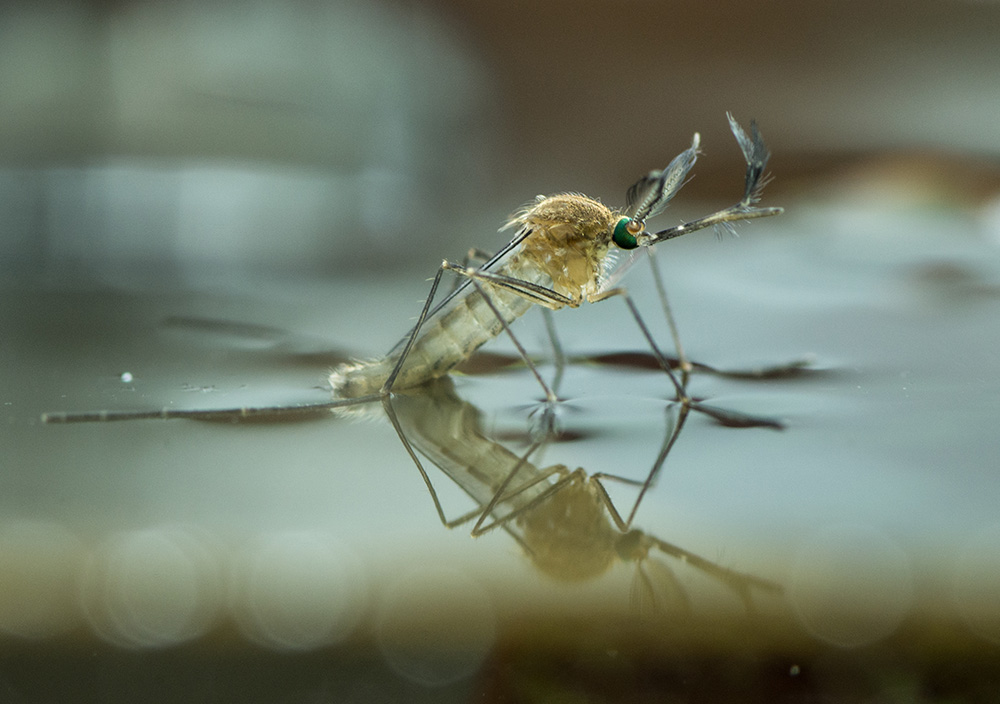
Mosquitoes
Rain barrels can also become a breeding ground for mosquitoes, which can be a nuisance and even a health hazard. Luckily, there are simple measures that can be taken to keep mosquitoes out of rain barrels.
Firstly, it is important not to use open-top barrels or barrels with contoured tops that trap standing water, as these provide ideal breeding grounds for mosquitoes. Similarly, all openings, including vents, inlets, outlets, and overflow ports, should be screened to prevent mosquitoes from entering. It is also important to avoid using decorative prefab rain barrels with concave features on the barrel-top that can hold enough water for mosquitoes to lay eggs and breed.
The recommended size for the screen mesh to keep mosquitoes out of rain barrels is 1/16 inch or smaller. This is because mosquitoes can fit through larger openings and use even the smallest amount of standing water to lay their eggs. Therefore, it is essential to use a screen with a small enough mesh size to prevent mosquito breeding while still allowing water to flow freely into the barrel.
However, this method is not foolproof as it does not exclude sunlight, which can lead to an algae problem. Additionally, if barrels do not have a properly placed overflow to direct excess water, stored water will rise above the level of the screen, rendering it ineffective in keeping mosquitoes at bay.
Overall, it is important to use rain barrels with secure screens covering all openings, including overflow ports. DIY-ers should also ensure that the rims of their barrels do not allow water to pool.
Is Rainwater Safe to Drink? Tips for Testing Your Home Water
IMPORTANT NOTE: At the Greener Way Associates (GWA) our focus is on using water for garden irrigation and other non-potable uses. While any water can become an emergency backup supply with proper treatment, GWA does not endorse specific methods for treating stored water to safe drinking standards. This article contains informational content only and does not constitute professional advice.
Rainwater is one of the purest forms of water available, and it can be a reliable source of drinking water if stored and treated properly. However, before drinking your collected rainwater, it is important to test it for potential contaminants, especially if you plan to use it as an emergency backup supply.
Rainwater harvesting has become increasingly popular, particularly in areas where access to clean and reliable water sources is limited. Harvested rainwater can be used for irrigation, washing clothes, and even drinking. However, once the rainwater has run off your roof and into your gutters, it can become contaminated with various impurities and pollutants, making it unsafe to drink without treatment.
If you are storing rainwater at home, it is crucial to invest in personal-scale water treatment and testing options to ensure that your water is safe to drink. Testing your rainwater is particularly important if you plan to use it as an emergency backup supply. In an emergency, it may not be possible to boil or chlorinate the water, so having safe and treated water readily available can be a lifesaver.
Water testing kits are available for both well water and city water, and either type can be used to test your rainwater. Multiple brands offer user-friendly home water tests. Loos for test that include bacteria, pH, hardness, nitrates/nitrites, chlorine, pesticides, and lead. The well water test kits may also includes an iron and copper test.
It is recommended to use the well water test first, as it tests for more elements. If your iron/copper test comes out negative, you can use the city version for future tests. Some roofing materials contain iron and copper, so it’s worth testing for these elements at least once.
Most of the tests are easy to run and require only a small sample of water. Apart from the bacteria test, which needs to sit for 48 hours before giving a reliable result, all tests can be completed in a matter of minutes. It is best to test your rainwater after it has been stored for a few months to get an accurate reading.
Rainwater is known to be very high-quality water, with an ideal pH factor for plants. The pH of your rainwater should read between 6.5 and 7.5, which is within the EPA guidelines for drinking water. The total hardness of your rainwater should be zero, as rainwater is 100% soft when it falls. Chlorine should also be zero, as rainwater is completely free of chemicals.
Nitrate/nitrite levels should be under 1 ppm for nitrite and under 10 ppm for total nitrate/nitrite, according to EPA guidelines. Rainwater can be prone to bacterial contamination, so it is important to test for bacteria, especially if you plan to use it for drinking. Some water test kits are able to detect the presence of E. coli, coliform bacteria, and other harmful microorganisms.
In conclusion, while rainwater can be a reliable source of drinking water, it is crucial to test it for potential contaminants before consuming it. Investing in personal-scale water treatment and testing options can ensure that your rainwater is safe for drinking and can provide you with peace of mind in emergency situations.
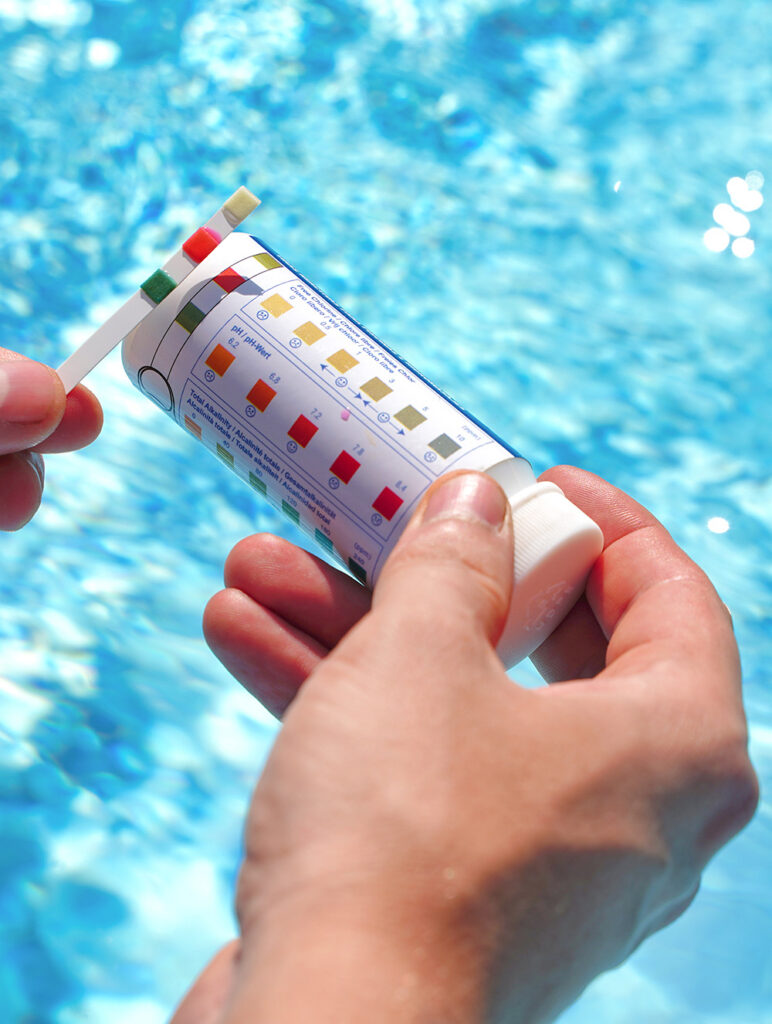
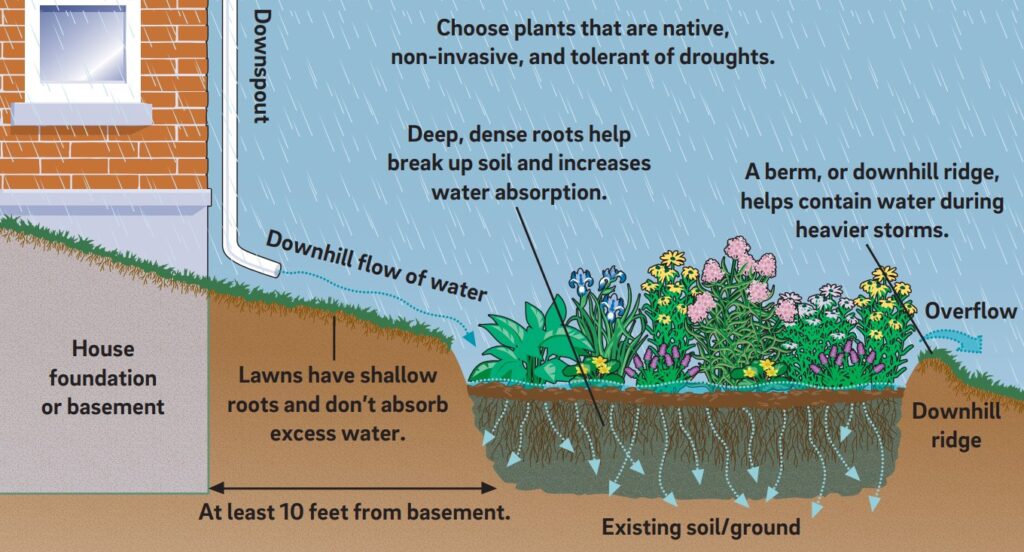
Passive Rainwater Harvesting
If you’ve installed a rain barrel system, you’re already doing a great service to the environment by actively collecting rainwater for irrigation and other purposes. However, once your barrels are full, you need to consider what to do with the excess water. This is where passive rainwater harvesting comes in – allowing the rainwater to infiltrate the ground naturally.
Passive rainwater harvesting is crucial for recharging groundwater, hydrating soils, and sustaining plant life. By directing excess water to permeable surfaces on your property, you can encourage the water to infiltrate and sink into the ground. This can be achieved through a variety of techniques, such as creating infiltration basins, swales, and rain gardens.
Infiltration basins are shallow depressions dug into the ground and filled with gravel or rocks. The basin collects rainwater runoff from your roof and directs it towards a larger gravel-filled depression, where the water can infiltrate into the ground. This technique slows down the flow of water and encourages it to spread across a larger, permeable surface area, making it more likely to infiltrate.
Swales are long, shallow ditches dug into the ground, which help to slow the flow of water and encourage infiltration. These ditches can be lined with rocks or gravel to help retain the water and create a natural-looking feature in your garden.
Rain gardens are designed to capture and infiltrate rainwater runoff. They typically involve creating a shallow basin filled with specially selected plants that can tolerate both wet and dry periods. The plants help to take up excess water, while the basin provides a space for infiltration.
It’s important to note that rain gardens and infiltration basins should be located at least 15 feet away from building foundations to prevent damage from excess water.
Overall, passive rainwater harvesting techniques can help to reduce the amount of runoff and recharge the groundwater in your area. By combining active and passive rainwater harvesting, you can maximize the benefits of collecting rainwater while also promoting a healthy ecosystem.
Gravity Irrigation Systems
Rainwater harvesting is an eco-friendly and cost-effective method of irrigation, with rain barrels being a popular option to collect rainwater. However, distributing the stored rainwater in a garden can be challenging. A drip irrigation system that relies on gravity to distribute the water can solve this problem.
Gravity irrigation systems have several advantages, including being the most water- and energy-efficient method of irrigation. Rainwater is also beneficial for plants as it does not contain salts, minerals, or chemicals.
Setting up a gravity irrigation system is straightforward. The drip irrigation system does not require pressure, just water in the line. The water flows downward and outward, and as long as the drip line stays below the water level in the barrels, gravity can distribute the water.
A basic layout of the system involves running more than one drip line from a rain barrel system to reach more of the garden. The system is customizable to suit specific garden designs. Slope, distance, and raised garden beds are important factors to consider. The distance limitation does not apply to a 1/2″ mainline, even on a flat site, and can carry the water quite far. The distance may be limited when navigating up-and-down segments, such as getting over into a raised bed.
A flat site with no slope can still work, but the output will decrease farther down the line due to friction loss. The most water-loving plants should be planted closest to the water source, with more drought-tolerant plants farther away. A gravity-fed system operates on 0-2 PSI, and watering time may be longer to achieve the desired output.
Automating the system is possible with special irrigation timers, filters, tubing, and other tools. A bubbler emitter kit with adjustable emitters is recommended for ornamental gardens. Pre-drilled inline dripline is suitable for veggie rows.
Automated options for gravity irrigation systems:
- Battery-powered timers: These timers can be attached to the faucet or spigot and will automatically turn on and off the water flow according to a set schedule. They are often programmable, allowing you to set different watering durations and frequencies for different parts of your garden.
- Solar-powered timers: These timers are similar to battery-powered timers, but instead of relying on batteries, they use solar panels to generate power. They are ideal for outdoor use and are environmentally friendly.
- Drip irrigation kits: These kits are designed to be easily installed and automated. They typically include tubing, connectors, emitters, and a timer. You simply connect the tubing to your rain barrel, set up the emitters near your plants, and program the timer to water your garden on a schedule.
- Smart irrigation controllers: These controllers use sensors to measure soil moisture, weather conditions, and other factors to adjust the watering schedule automatically. They are often connected to Wi-Fi and can be controlled remotely via smartphone or computer.
- Rain sensors: These sensors detect rainfall and automatically turn off the watering system when rain is detected. This helps prevent overwatering and saves water.
- Moisture sensors: These sensors measure soil moisture levels and adjust the watering schedule accordingly. They can help prevent under or over-watering and ensure that your plants are getting the right amount of water.
A gravity irrigation system for rain barrels is a cost-effective and eco-friendly method of irrigating a garden. It is customizable, efficient, and easy to set up with a little planning and consideration of slope, distance, and raised garden beds.
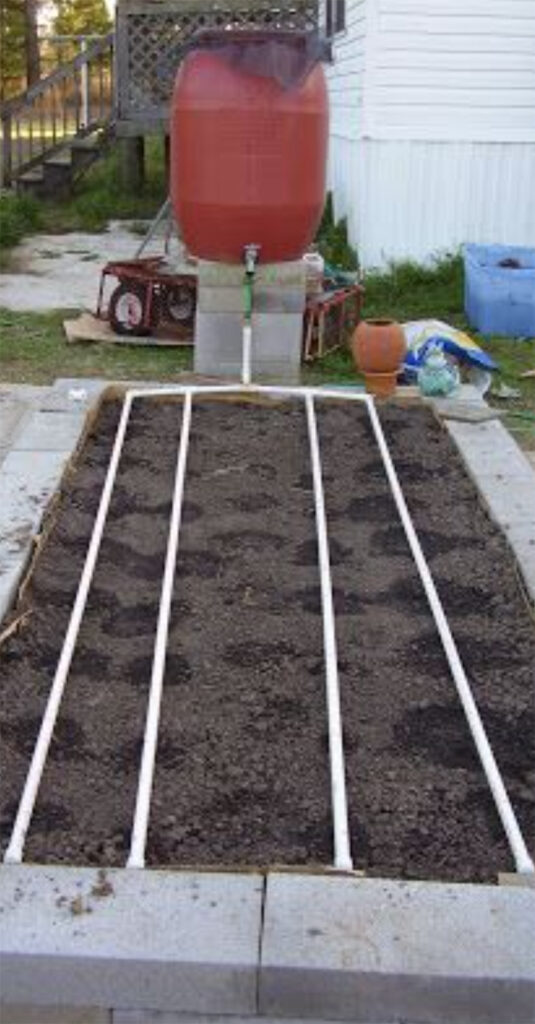
Written by Diego Wuethrich – 03/21/2023